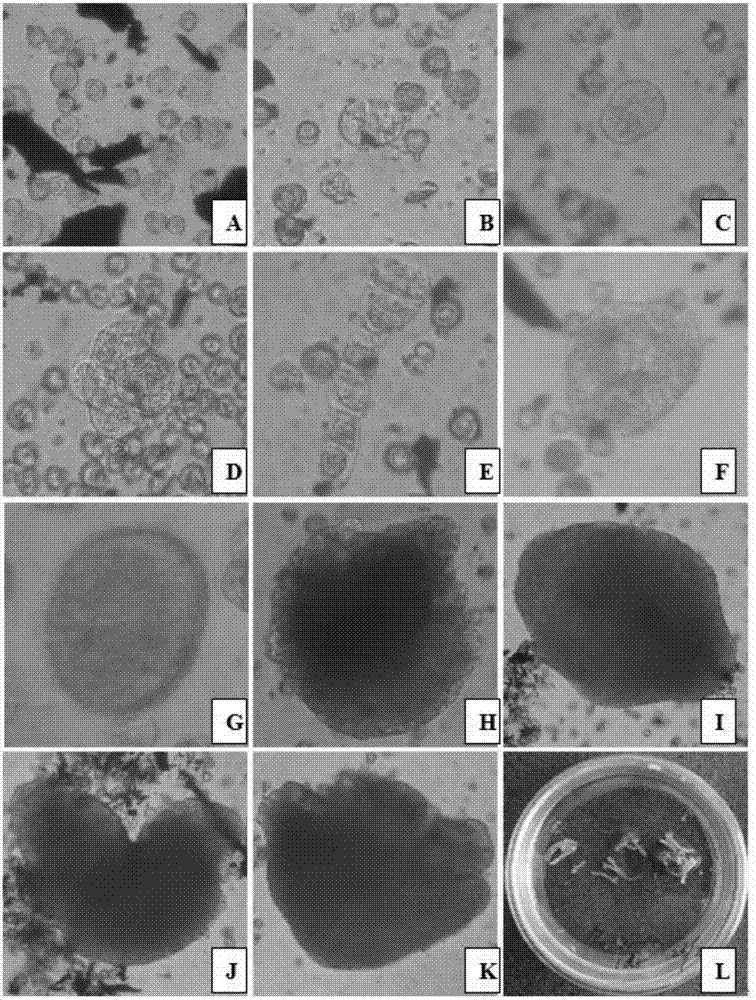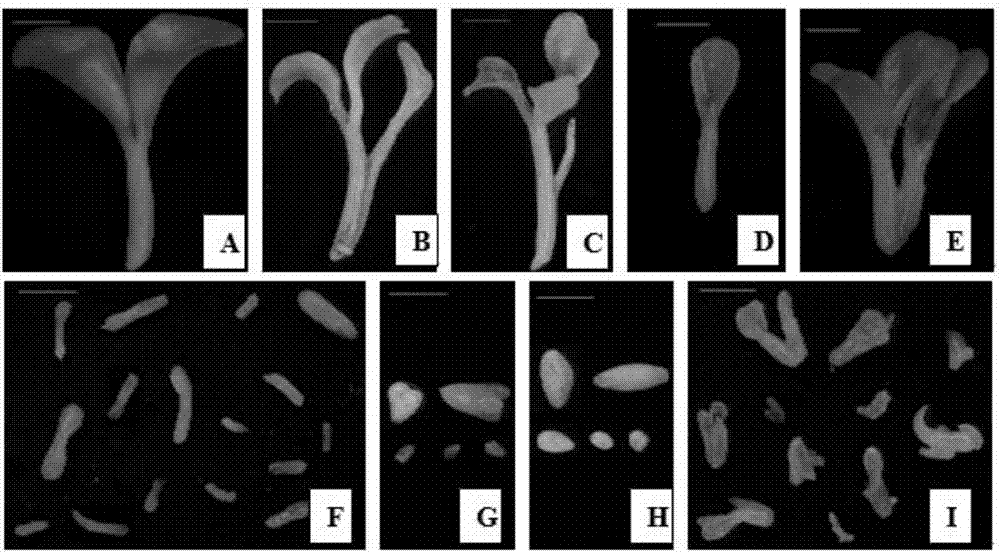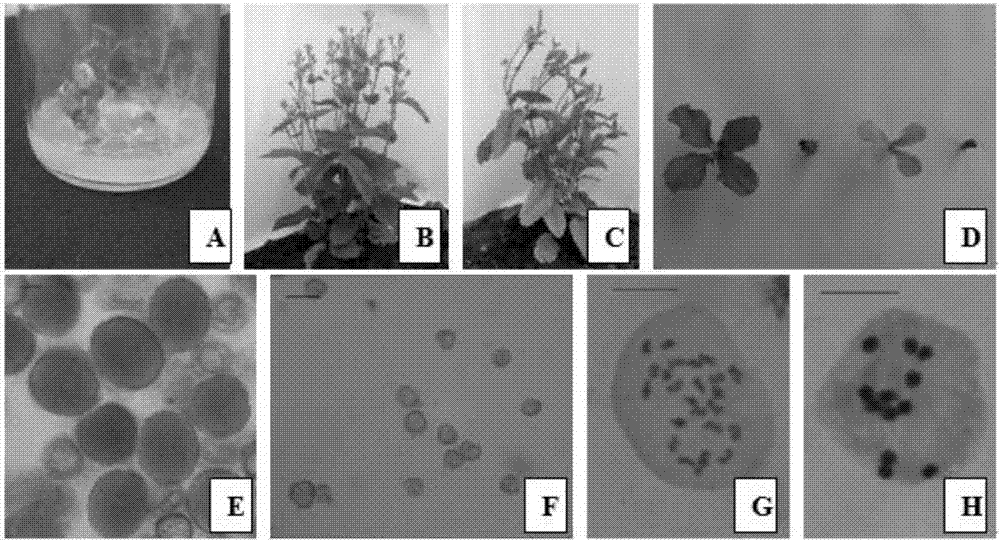Corychophramus violaceua embryoid and plant cultivation method
A cultivation method and technology of embryoid bodies, applied in botany equipment and methods, horticultural methods, plant regeneration, etc., to achieve the effects of not easy to mutate, high yield, and speed up the cultivation process
- Summary
- Abstract
- Description
- Claims
- Application Information
AI Technical Summary
Problems solved by technology
Method used
Image
Examples
Embodiment 1
[0035] The seeds of Zhugecai were collected from wild open-pollinated plants on the campus of Southwest University in Beibei, Chongqing, and propagated and preserved by the Chongqing Rapeseed Engineering Technology Research Center. On September 20, 2010, seedlings were sown in Daejeon. On November 7, the seedlings were transplanted into the soil in the glass greenhouse of Southwest University. A total of 100 plants were transplanted. After survival, about 5g of compound fertilizer was applied to each litter, and watered as needed. The greenhouse light is natural light, and the temperature is not specially controlled. In February 2011, after flowering, samples were taken for microspore culture. In October, the microspore plants were transplanted to the test field. After flowering in the next year, the morphology and fruitiness were identified, and samples were taken to observe the pollen fertility and chromosome number.
[0036] Wherein, the microspore culture specifically incl...
Embodiment 2
[0039] The seeds of Zhugecai were collected from wild open-pollinated plants on the campus of Southwest University in Beibei, Chongqing, and propagated and preserved by the Chongqing Rapeseed Engineering Technology Research Center. On September 20, 2010, seedlings were sown in Daejeon. On November 7, the seedlings were transplanted into the soil in the glass greenhouse of Southwest University. A total of 100 plants were transplanted. After survival, about 5g of compound fertilizer was applied to each litter, and watered as needed. The greenhouse light is natural light, and the temperature is not specially controlled. In February 2011, after flowering, samples were taken for microspore culture. In October, the microspore plants were transplanted to the test field. After flowering in the next year, the morphology and fruitiness were identified, and samples were taken to observe the pollen fertility and chromosome number.
[0040] Wherein, the microspore culture specifically incl...
Embodiment 3
[0043] The seeds of Zhugecai were collected from wild open-pollinated plants on the campus of Southwest University in Beibei, Chongqing, and propagated and preserved by the Chongqing Rapeseed Engineering Technology Research Center. On September 20, 2010, seedlings were sown in Daejeon. On November 7, the seedlings were transplanted into the soil in the glass greenhouse of Southwest University. A total of 100 plants were transplanted. After survival, about 5g of compound fertilizer was applied to each litter, and watered as needed. The greenhouse light is natural light, and the temperature is not specially controlled. In February 2011, after flowering, samples were taken for microspore culture. In October, the microspore plants were transplanted to the test field. After flowering in the next year, the morphology and fruitiness were identified, and samples were taken to observe the pollen fertility and chromosome number.
[0044] Wherein, the microspore culture specifically incl...
PUM
 Login to View More
Login to View More Abstract
Description
Claims
Application Information
 Login to View More
Login to View More - R&D
- Intellectual Property
- Life Sciences
- Materials
- Tech Scout
- Unparalleled Data Quality
- Higher Quality Content
- 60% Fewer Hallucinations
Browse by: Latest US Patents, China's latest patents, Technical Efficacy Thesaurus, Application Domain, Technology Topic, Popular Technical Reports.
© 2025 PatSnap. All rights reserved.Legal|Privacy policy|Modern Slavery Act Transparency Statement|Sitemap|About US| Contact US: help@patsnap.com



